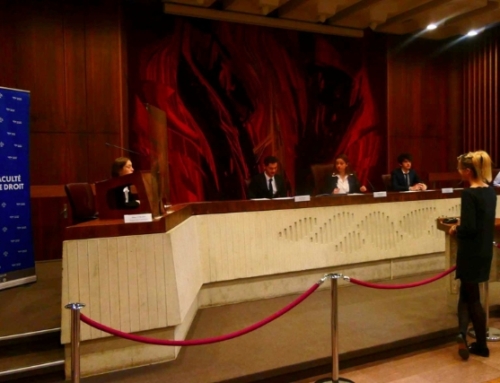The importance of the university’s social mission during the crisis
Did French universities really need such a crisis to reinvent their knowledge transmission model? Did they wait until the storm was upon them to integrate the latest e-learning technologies? At first glance, we’d be tempted to answer this twofold question in the negative, since innovations in teaching methods and a sense of fairness are undoubtedly permanent driving forces in our public higher education system. However, we have to face the fact that the covid-19 crisis has had an accelerating effect on the widespread use of distance learning platforms and online assessments. Nothing will ever be the same again, and there’s no doubt that tools for delivering training in a hybrid format have a bright future ahead of them.
But first, let’s take a look at the remarkable performance of French universities in this context, highlighting both their agility (a quality not so often attributed to them) and their appetite for the latest technologies. The actions taken and the results achieved underline the dynamism of the 68 universities spread across the country. They welcome almost 1.7 million students every year, a figure that has been rising steadily for over twenty years. The challenges they faced in this unprecedented situation were many and varied, and required a strong and intense mobilization of staff, teachers and CIOs alike. They all worked urgently on behalf of students, to resolve organizational, logistical and material problems, but with great serenity as regards educational continuity. The deployment of solutions, while respecting the interests of all concerned, was achieved without any impact on the quality of teaching, and in the vast majority of cases, from the 1st week of confinement. It’s a real achievement that deserves to be applauded, and one that invites us to find out more about the techniques deployed, as well as the vision for the evolution of the university’s social mission.
As reported in a recent article published in the Asian Journal of Distance Education[1], “with the great uncertainty that characterizes this period for humanity, and the very high levels of stress and anxiety that have gripped students, teachers and parents alike, the pedagogy of ‘care’ has made its way into higher education institutions. Taking charge, looking after the health and well-being of all, ensuring access to information, have become essential issues that will continue to modify practices well beyond this covid-19 crisis”.
Last year, for example, the University of Toulon had already focused its institutional strategy on a “people policy”, investing heavily in medical and social services for its students. An investment that has taken on particular importance in these times of crisis, as Michel Langevin, the university’s vice-president for student life, explains in an episode of the #Univ4Good series: “We have set up a health center and recruited a psychologist to enable students to consult directly on campus. And we have mobilized 150,000 euros to help our students in difficulty during this crisis”, Michel Langevin told us.
However, it has recently been recognized that one of the key factors in caring pedagogy lies in the institution’s ability to listen and then engage in open, authentic dialogue with students, particularly those who were already struggling before the crisis with unequal access to information and courses, sometimes accentuated by the use of digital tools. So, right from the start of the crisis and the closure of university campuses, French universities mobilized to identify students in situations of digital divide. A recent survey of French universities reveals that an average of 2% of students are in a digital divide situation, not owning a computer and/or not having a sufficient Internet connection to follow courses.

It was against this backdrop that Paul-Valéry Montpellier 3 University, like several other universities in the region, paid particular attention to its students. François Perea, Digital Vice President at Paul-Valéry University, explains that the administration “wanted to get in touch with all students right from the start of the crisis, by sending SMS campaigns, but also e-mails and internet surveys, so as to be able to locate them, identify their difficulties and finally call them one by one to find solutions, enable them to connect, access courses put online by teachers and later sit their exams”.
While this benevolence had positive social effects, were the sudden changes in teaching methods anticipated by teachers and students alike? Were they ready to use the new tools? How did they cope with the digital transition, and what can we learn from them for the future?
Find out more in the next article in this series dedicated to how universities handled this health crisis during the 2019-2020 academic year entitled “From pedagogical continuity to the hybridization of teaching: reflections on the future of the university.”
Note: The full version of this article is published on the ExLibris Campus M website.
[1]Bozkurt et al., (2020), « A global outlook to the interruption of education due to COVID-19 Pandemic: Navigating in a time of uncertainty and crisis », Vol. 15 (1).






